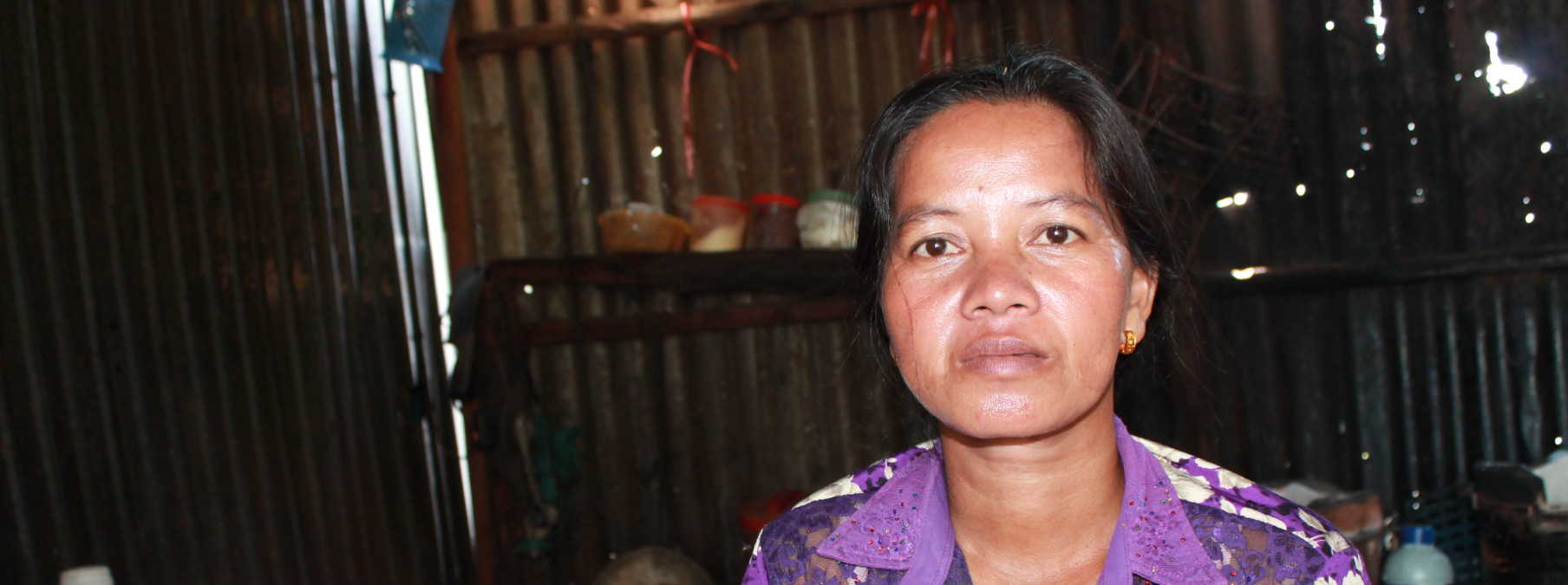Health risks of low water levels alleviated by water tanks and filters
Published: May 27, 2016 Reading time: 3 minutes Share: Share an articleThi Mom, 47, has a lot of responsibility resting on her slim shoulders. The mother-of-four not only cares for her children and young grandchild but also for her husband, who has a disability which means he has been unable to walk for the past nine years. While her older children assist their father with fishing from his small boat, Mom spends a large portion of her time collecting water for the family—something which was always challenging but has become much harder since a significant drought struck Cambodia in April.

Every day Mom walks to and from a nearby well up to 30 times to fill their two small containers with water. The well is around 500m from their home, meaning she can walk up to 30km on a daily basis. The well is owned by a more prosperous family who pump water for their own needs first, so Mom is often forced to wait to use this.
“If I am fast, I can get water before the well runs out, but recently it has often run dry so I have to wait a long time for it replenish,” she says. “The long time I spend at the well affects how much time I have for everything else I need to do, like laundry and preparing meals for the family. Sometimes I have had to delay dinner as much as three hours because of water shortages.”

Mom’s husband also has a kidney problem which means she has to wash his clothes every single day to ensure he has clean garments to wear. The water from the well is adequate for washing, but Mom shares that if they drink this without boiling the family will often get diarrhoea—adding boiling their drinking water to the list of chores she must perform multiple times each day.
The arrival of her daughter’s baby right as the hot season commenced added additional pressures to their household. “The water from the well is not clean when the levels are so low, so we were reluctant to use this for the baby even after boiling.” Mom’s husband showed the small tea cup he had been drinking from, which contained a murky residue at the bottom.
“We were worried this brown water is not good for the baby. We wanted to make sure she did not become sick, so we had to spend money on fresh water from a supplier. We did this three times, spending around 20,000riel (USD$5) each time for just 200 litres.”
To respond to the worst drought in Cambodia in decades, CARE and People in Need (PIN) have provided households such as Mom’s with large containers of water—totalling more than all Mom has purchased previously. “I think this will give us enough drinking water to last the next month,” she says. “I am very happy to have these now, because we will not be forced to drink the dirty water from the bottom of the well or spend money on more.”
CARE and PIN also provided ceramic water filters to ensure the water her family is drinking is absolutely safe. “The water filters are very good,” Mom concludes. “We can make sure that all water we use for the baby is clean so she stays healthy and has a good start to her life.”



